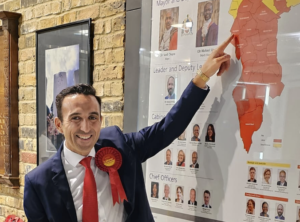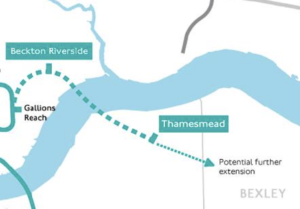Just after Christmas last year, a married couple who live in a flat in east London, not far from the Olympic Park, noticed water dripping from a light fitting in their kitchen ceiling. A puddle was forming on the floor.
They switched off the electricity supply to that part of the flat, placed a bucket under the leak and phoned the repairs service of the housing association that owns the building, where they have lived since October 2016, the year of its completion. They kept their four-year-old daughter well out of harm’s way.
It was 29 December 2022. The couple’s call to the repairs service was answered. They were told it sounded as if the water might be coming from the flat above them, in which case the occupants of that flat, not theirs, would have to be the ones to report the problem.
The upstairs neighbours were helpful. But if the water was indeed coming from their flat, its source was not obvious. The couple conveyed this information to the housing association by email, urging someone to quickly get in touch because, “the leak is dangerous as it is on the electrics”. They got no reply.
On 30 December the couple phoned the housing association again, wanting to know if anything was happening. They were told that someone had been to the flat above them but found no leak there and that a knock on their own door had gone unanswered. This last point puzzled them – they say they’d been in all day. They were informed that the case had been marked closed.
Dissatisfied, they phoned again on the same day. A different person took their call. They were told someone would be round to help them in the next 24 hours. No one came.
On 31 December they phoned again and were again told someone would be round in the next 24 hours, this time to look at both flats. No one came.
On 1 January 2023 – New Year’s Day – they again spoke to the housing association. Again, they were told someone would be round in the next 24 hours. This time someone did come. He went into both flats and deduced – contrary to what had apparently been concluded during the previous reported visit – that the source of the leak was indeed the flat upstairs, specifically a drainage pipe serving its terrace, which is directly above the couple’s kitchen ceiling. The couple say they were told an email would be sent to inform them about what would happen next. No email came.
On 4 January, they phoned the repairs team again. They were told that someone had looked at the upstairs flat and decided that the problem, in fact, began with the flat above that one.
On 5 January, they went in person to the housing association office on the development their flat forms part of to try to find out more. They were told that roofers would be coming to their block on 12 January and that an update about this would be sent to them. No update was received.
However, for the next few weeks the leaking stopped. Could it be that the problem had been fixed? It had not.
***
On 7 March, the couple reported that water had again been coming through the light fitting on their kitchen ceiling. This time they communicated through the website of the housing association in question – Southern Housing, one of the largest providers of affordable housing in London and, as such, a member of the prestigious G15 group.
They followed up with an email, asking for information about any work that had been done by roofers on 12 January and “what kind of job will be done about today”. They also asked to be shown Southern’s complaints policy with a view to putting their dissatisfaction on a formal footing.
On the same day, they also telephoned Southern. They were told they would be phoned back as soon as an email from the roofers about their situation had been received and that Southern would send them an email containing all the information they had asked for. No phone call or email ever came.
On 8 March they phoned the repairs team again. They say the person who answered this time hung up on them after being “rude and unhelpful”. Happily, a further call on the same day was taken by someone else who was “helpful and polite”. He said another person would phone them later in the day. No phone call came.

On 9 March they spoke to the service centre and were told their case had been sent to the “head of surveying” and that an appointment would be made for a surveyor to come within a maximum of ten days. Meanwhile, water continued to leak through their kitchen ceiling.
On 10 March they emailed Southern again:
Good morning,
The leak unfortunately persists and we have now collected more than 5 litres of water coming down from our ceiling.
Can we have an update urgently today if the surveyor will be attending our property or solving this issue?
Kind regards.
A reply came later that day. It said an appointment had been booked for 31 March – three weeks away and more than three months since the ceiling leak had first appeared and been reported.
The couple told Southern they thought the wait for a surveyor far too long and that they would be consulting a solicitor.
Three days later, having spoken to the service centre, they got a call from the repairs team saying that on 20 March a surveyor and a roofing contractor would be going to the two flats directly above theirs and would visit them as well. But before that, losing patience, the couple contacted the government’s housing ombudsman for advice about making an official complaint.
On 19 March, they sent Southern a photograph of the black mould that had begun to form on their kitchen walls.
On 20 March, a repairs team came to their flat. During the visit, they were told that another flat on the same floor as theirs had reported having the same problem. And they were told that there might be something amiss with the drainage system in their block of flats as a whole. Getting to the root of this might entail cutting a section out of their kitchen wall in order to investigate more closely.
The next day, 21 March, the couple asked Southern when work on solving the problem would start, stressing that the mould was spreading and returned soon after being wiped away. And on 22 March they reported that a hole had appeared in one of their kitchen’s walls.
***
For more than six weeks, nothing happened – nothing except more leaking, more damp and more mould. Several emails were sent requesting action. On 24 April the housing block’s management team replied to say they had notified the surveyor, who would arrange for a member of Southern Maintenance Services to “contact you with an update”. Nothing happened.
On 3 May, the couple emailed the management team again, asking why nothing had happened. They received a prompt reply, saying their inquiry had been “escalated” and that someone from the services team would phone that afternoon.
The phone call came. It was explained that the building surveyor was on holiday but that a note had been left for him about their case. It was also explained that the problem seemed to be a symptom of a wider one within the block and that the situation was being monitored.
Then, on 5 May something did happen – but not the sort of thing the couple had hoped for. They emailed the management team again. They had discovered damp and mould in another part of their flat – beneath their bed. They also rang the customer service number they had been advised to use in future, but no one answered the phone. It was not, they say, the first time that had happened.
On the 9 May they sent another email, asking why they hadn’t had a reply to the one they had sent on 5 May. They composed and sent it to the management team and to property services complaints while waiting for someone to answer the phone. The email said:
“The mould and smell is very intense and we had to clean the carpet on Friday night even though this will only help for a little while. We made a cut on the carpet to see underneath, where we discovered that the concrete floor is very damp and therefore the carpet is damp too, creating a big patch of damp that seems to be spreading. Mould can be seen in the concrete floor and the carpet.”
The emailed explained that they had had to buy a dehumidifier and waterproof bags to protect clothing stored underneath their bed. It concluded;
“We feel completely helpless as we are completely at the mercy of the housing association making the repairs that need to be done before we can do anything to sort out all the repairs that need to happen…”
And there was PS: “I have been on the phone now for 22 minutes.”
Eventually, the phone call was answered. And on 31 May, a surveyor came to look at the damp and mould under the bed. He thought it likely to be coming from the bathroom, right next door, but couldn’t be sure if the problem emanated from the water and heating system serving the whole block or from the bathroom itself.
The distinction matters, because the couple’s home is a shared ownership property. That means that if the original source of the damp under the bed was the communal plumbing arrangement, Southern would be responsible for fixing it – as they are for the leak in the kitchen – but if wasn’t, the couple would have to pay.
The one thing the surveyor said he was confident about was that nothing would happen very soon. The couple found their own plumber, who came round, took a good look at the bathroom shower and found something amiss. Touch wood, since his visit the damp under the bed hasn’t got any damper.
But today is 3 July, 2023 – more than six months since water began dripping through the light fitting in the kitchen ceiling was reported. And still that problem has not been solved.
***
I have been the flat in question many times and I know the couple who live there well. That is because they are one of my sons and his wife. Their four-year-old daughter is my granddaughter.
For some time, I’ve been berating myself for not writing more about the disrepair of too much rented and “affordable” housing in London and the struggles of those living in such homes to get anything done about it (there has been some excellent journalism elsewhere).
Getting to the bottom of what has happened in individual situations can take a great deal of time, and that is something I don’t often have. In this case, of course, I’ve had ready access to all the information I need.
For the most part my son and daughter-in-law have had no problems since moving in to their flat almost seven years ago. But now they have a big one and the worry and frustration is taking its toll. They are concerned that their daughter has been struggling to shake off coughs and colds. The area of their kitchen wall where mould keeps reappearing every time they clean it off is getting bigger.
They have now issued a formal complaint to Southern and are asking for everything to be repaired and for compensation. This, too, is taking longer than it is supposed to.
Southern’s “customer service promise”, as set out on its website, says people who live in its properties can expect them to “do what we say”, to “keep you informed” and to “listen and learn”. My son and daughter-in-law do not believe that promise has been kept. They are not alone.
On 29 June, coincidentally during the period in which I was in contact with Southern to tell them about this article and discuss how they might respond to the story it tells, the housing ombudsman announced that it has launched a “special investigation” into Southern Housing “after its maladministration rate in complaints about complaint handling jumped to 81%”. The increase was from 56 per cent maladministration rate a year ago. The ombudsman himself, Richard Blakeway, described the situation at Southern as being “of concern”.
Southern sent me a statement regarding the situation of my son, daughter-in-law and granddaughter. It said they are “keen to resolve the repair issues” in question and “need to gain entry to another property to complete this repair and have faced repeated access issues, which we’re working hard to resolve”.
Were my son and daughter-in-law not capable, determined people might well have given up by now. Others, less well-equipped to stick up for themselves, might well have. And that is one of the reasons why – with their blessing and help while, at this stage, preserving their anonymity – I have told their story here.
Of course, I hope by doing so I will help them and their fellow residents of the housing development where they live to get the problems with their homes sorted out. But I also want to augment the growing list of similar stories about far too many fellow Londoners and many others elsewhere of late.
***
At the same time, taking some large steps back, I recognise and, I hope, appreciate that these are very testing times for housing associations and, indeed, for local authority affordable housing providers in the capital and elsewhere.
I have numerous professional and personal acquaintances in the sector, ranging from housing association chiefs to senior figures in London government, including City Hall. These have left me in no doubt about the financial pressures on housing associations in recent years, beginning with cuts to their funding from the government from 2010 and escalating with the post-Grenfell cladding crisis, the resulting discovery of further building standard failures, the challenges of retrofitting, labour shortages and the cost implications of inflation. Many are in a perilous position.
On 16 December last year, 13 days before my son and daughter-in-law first spotted water coming through their ceiling, the current Southern Housing was formed through a merger between the Southern Housing Group housing association, which built the homes discussed in this article, and another housing association, Optivo.
Such mergers can be seen as solutions to difficulties housing associations face, although last autumn, with discussions about the merger taking place, the Southern Housing Group reported an increase in annual turnover to £252.3 million, up from £212 million the previous year.
With the two parties were joined, Southern Housing’s chief executive Paul Hackett, who had held the same position at Optivo, said:
“This merger isn’t about growing into a large national organisation; it’s about doing what we do better in the communities we already work in. Residents will be at the heart of our services and we’ll use our size to influence positive change in the areas where we operate.”
I’ve met Paul Hackett in the course of my work. I do not doubt he was sincere in what he said. I don’t doubt either that he and many of his colleagues can still hear the huge alarm bell set off by the death in 2020 of Awaab Ishak, a two-year-old who lived in a housing association flat in Rochdale, from a respiratory condition a coroner concluded had been caused by exposure to mould in his home.
The trouble is, the bell is still ringing.
Dave Hill is On London’s publisher and editor. Twitter: Dave Hill and On London. If you value On London’s output, please become a supporter or a paid subscriber to Dave Hill’s Substack.










